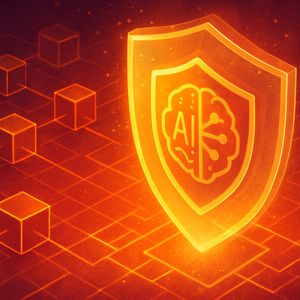AI Verification Might Just Be Blockchain’s Trustiest Sidekick
5 min read
BitcoinWorld AI Verification Might Just Be Blockchain’s Trustiest Sidekick As blockchain adoption has grown beyond cryptocurrency, an uncomfortable truth has emerged: decentralized doesn’t automatically mean accurate. Fraud, data manipulation, and identity spoofing remain stubborn problems, just harder to audit at scale. This is where AI verification is slowly stepping in, bridging the last mile between theoretical trustlessness and practical reliability. In 2025, pairing AI with blockchain isn’t a novelty, it’s increasingly essential infrastructure. From Immutable to Verifiable Blockchains are great at proving that data hasn’t been tampered with once it’s written. But they don’t guarantee that the data was valid in the first place. A smart contract can store anything you feed it, correct or fabricated. This “garbage in, garbage forever” problem is especially acute for systems like supply chain records, NFT provenance, and decentralized identity credentials. If someone can convincingly falsify input data, the ledger can’t tell the difference. You’re left with an indestructible record of misinformation. AI verification counters this flaw by analysing incoming data streams, documents, and biometric signatures in real time. Machine learning models can spot subtle forgeries, like a manipulated shipping manifest or a synthetically generated ID scan, before they ever touch the ledger. In other words, AI is the bouncer at the door, ensuring that only trustworthy inputs get immutably stored. How AI Verification Actually Works At its core, AI verification systems rely on pattern recognition and anomaly detection. Here are a few key techniques: Computer Vision Models: These tools scrutinize images and video for manipulation artifacts, compression mismatches, lighting inconsistencies, or telltale pixel noise. They’re especially useful for verifying identity documents and supply chain photos. Natural Language Processing (NLP): NLP engines read contracts, certificates, and metadata to flag inconsistencies in terminology, date formats, or numerical entries. This can surface doctored agreements or suspicious document trails. Behavioural Analytics: In decentralized finance (DeFi), AI models monitor wallet behaviour to detect outlier transaction patterns. If a supposedly cold wallet suddenly executes hundreds of high-frequency swaps, an AI system can flag the account for review. Signal Analysis: In IoT-heavy use cases (like agriculture or logistics), machine learning tracks sensor data streams to catch improbable readings that might suggest tampering. Together, these tools transform blockchain from a passive record-keeper into a more active verification layer. Real-World Use Cases Decentralized Supply Chains IBM’s Food Trust platform and VeChain’s logistics networks both illustrate the challenge. They store shipping and handling records on chain to provide transparent proof of origin. But unless each checkpoint is validated, records can be forged by a single dishonest participant. AI models trained on environmental and sensor data can cross-check timestamps, GPS locations, and environmental readings to verify shipment integrity. If temperature logs don’t match the expected ranges, the AI flags the record as suspect before it’s finalized. Decentralized Identity Self-sovereign identity frameworks like Sovrin and Microsoft’s ION are built to empower users to control their own credentials. But no matter how decentralized the system is, it still requires a reliable way to confirm that submitted documents and biometric details are authentic. This verification step is especially critical for platforms that require strict age and identity validation. iGaming services, subscription-based fan communities, and AI companion platforms often face the same scrutiny. For instance, preventing underage access to age-restricted AI companions, including content labeled Candy AI naked , depends on robust verification pipelines. AI-powered image recognition now plays a central role in comparing selfies to official ID photos. Liveness detection helps ensure applicants aren’t using static photos or manipulated deepfakes. These checks strengthen trust and compliance, whether someone is verifying their age to open a gaming account or proving eligibility to access adult-rated AI interactions. NFT Provenance NFT marketplaces have faced waves of art theft and plagiarism. AI image recognition tools can scan newly minted tokens for near-duplicate artwork across public datasets, flagging collections that appear to rip off existing creators. Combined with metadata analysis, this approach protects both artists and buyers from unverified or stolen content. A Layer of Soft Trust in a Hard Trust World One of the biggest misconceptions about blockchain is that it removes the need for trust. In reality, it simply shifts the trust burden. You don’t have to trust a bank or a platform but you do have to trust that the data entering the chain is correct. AI verification doesn’t replace that need, but it distributes and strengthens it. Instead of depending on one auditor, AI models trained on millions of examples become a probabilistic defence system. They don’t guarantee absolute accuracy, but they vastly improve the odds that fraud will be detected early. This blend of machine learning and decentralization is sometimes called “trustware,” software that builds and maintains confidence by combining cryptographic certainty with probabilistic verification. Challenges and Trade-Offs No solution is perfect. AI verification introduces new considerations: Model Bias: If your training data is skewed (e.g., biased face datasets), the verification system can perpetuate discrimination. Explainability: Complex neural networks can spot anomalies, but explaining why a record was flagged isn’t always straightforward. Cost and Compute: Running inference on large data volumes can be computationally expensive, especially for smaller blockchain networks. Privacy Risks: Systems analysing sensitive images and documents must adhere to strict data governance rules, or risk creating new attack surfaces. That’s why most deployments involve hybrid systems, AI to flag issues, and human auditors to adjudicate edge cases. A Glimpse Ahead If blockchain was the first trust revolution, AI verification might be the second. In the coming years, we’ll likely see: Industry Standards: Formal benchmarks for AI-powered validation of on-chain data Composable Verification Services: Plug-and-play APIs that any dApp can integrate for document or transaction checks Edge AI Models: Lightweight verification that can run directly on IoT devices before data is ever uploaded Auditable AI: New frameworks to ensure model transparency and reproducibility The endgame isn’t simply a ledger that can’t be changed, it’s a ledger that never needed to be corrected in the first place. This post AI Verification Might Just Be Blockchain’s Trustiest Sidekick first appeared on BitcoinWorld and is written by Keshav Aggarwal

Source: Bitcoin World



